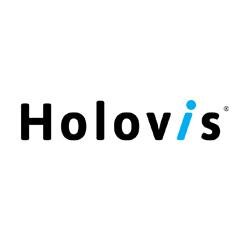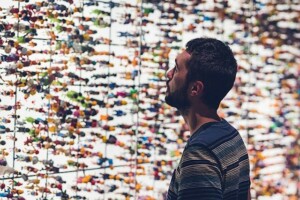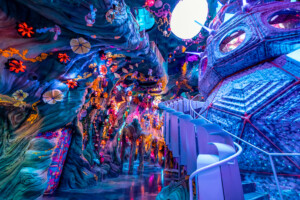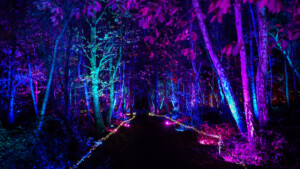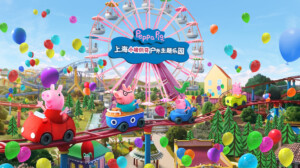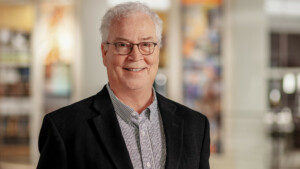With customer lives connected 24/7 to friends, entertainment and information, there is now a demand for experiences, which must be high quality, personalised, new, and of course shareable.
Here is a look at some interesting trends and developments that are affecting all sectors across the attractions industry. The list is not intended to be comprehensive, but gives a flavour of some trends that we think are worthy of a look.
1. Virtual Reality
Virtual Reality creates a new kind of experience – immersive and novel. With quality improvements in hardware the technology is starting to find its way into theme parks.
Since the reveal of ‘Alpine Express’ VR by Mack at Europa Park just before IAAPA 2015, it seems like parks around the world are clamouring to invest in this new technology, including Alton Towers who recently announced their Air re-vamp with space-themed VR Galactica.
VR is also a useful tool in planning attractions and construction. Holovis unveiled their Pocket RideView VR Design Suite at EAS 2015.
Advantages
.jpg) VR can revitalise an old ride with significantly less investment than building a brand new one. The media for VR can be changed easily, creating different experiences for the same physical ride.
VR can revitalise an old ride with significantly less investment than building a brand new one. The media for VR can be changed easily, creating different experiences for the same physical ride.
It is not just theme parks that are finding applications for VR – museums are also using it to wow the crowds. The British Museum recently used VR to allow guests to explore a virtual Bronze Age Roundhouse, whilst visitors to London’s Natural History Museum can explore an underwater environment at the dawn of Life on Earth. The technology is versatile, allowing infinite possibilities for use in the attractions industry.
Caution
Although there are great possibilities for VR, there are limitations. The technology is improving and developing yet even very small lags between motion and images can cause nausea.
2. AR
Virtual Layer on the Real World
Whereas Virtual Reality creates a virtual world, Augmented Reality (AR) is a live direct or indirect view of the real world augmented by computer-generated sensory input such as sound, video, graphics or GPS data. With Google investing $542 million in new AR company Magic Leap, the technology looks set to explode.
The attractions industry will undoubtedly find many applications for AR. One example already out there is INDE’s travelling Dinosaur Exhibition ‘T-REX Revealed’ which allowed guests in China to view and interact with rendered dinosaurs.
Although AR lags VR at the moment, Digi-Capital predict that revenues from AR applications will outstrip VR by 2019.

3. Gamification
Gamification is the addition of an element of competition and interaction to almost anything to increase engagement. This is being done with increasing sophistication to meet the expectations of visitors.
Minecraft at the Museum
The Tate has recreated some of its famous artworks in the hugely popular Minecraft game to encourage children to explore the paintings in greater detail. You don’t need to even visit the gallery itself to enter Tate Worlds online.
The first two maps are based on André Derain’s 1906 painting of London, The Pool of London, and Christopher Nevinson’s 1920 painting of New York, Soul of the Soulless City. In Tate Worlds: Soul of the Soulless City children can explore London and learn about the importance of colour pigments in this Fauvist piece. They can take that Minecraft staple, a rollercoaster, around New York.
It’s easy to try to tap into the popularity of Minecraft with an exhibition. What the Tate have done so brilliantly is to understand the opportunities within the game itself and develop something that will be truly appealing to their target audience, at the same time incorporating information in a fun and engaging way.
Gaming at the Waterparks
WhiteWater West’s SlideBoarding is a great example of gamification that can be added to existing slides to rejuvenate it or in a brand new slide. In a move that brings a Guitar Hero style game format to a waterslide, guests play a game as they travel down the slide on an adapted mat. Crucially scores can be viewed on a leader table allowing competition and social sharing.
4. Mobile Technology
Attractions are utilising advances in mobile technology to meet the increasing demands of customers. Here are some newer developments.
Design of a park
Dubai Parks and Resorts recently announced a collaboration with UAE telecoms giant Etisalat to integrate smart technology to its new mega theme park. Radio frequency wristbands, smart apps, ticketing, parking, digital payment and connected F&B are planned for the new parks.

“From booking tickets, to finding parking spaces, to choosing rides with lower wait times or deciding on the right cuisine to eat, this collaboration will facilitate an unforgettable trip for visitors with few simple clicks on their smart devices, ” said Dubai Parks and Resorts CEO Raed Kajoor Al Nuaimi in the press announcement.

Adding Value
Mobile technology can also be integrated into the attraction to add a new element to the story, a layer of information to an exhibit and to enhance the guest experience. The Talking Statues initiative around London, Manchester and Chicago aims to connect people with statues that they see around their cities but never really notice. Passers who swipe their mobile on an NFC tag on the statue will receive a phone call from the character of the statue voiced by a celebrity. Queen Victoria, Peter Pan and even Sherlock Holmes are all available to give guests a call!
Tech Changes at the Speed of Light

Disney’s Magic Bands were a huge $1 billion investment for the company, and planning started the same year the first iPhone came out. However, mobile technology adoption by consumers has developed at such a pace that the bands no longer seem quite such a revolutionary solution.
For this reason, new Shanghai Disney Resort is opting instead to solely use mobile technology for ticketing and resort services.
5. Customised Experiences
Customers are getting used to being able to customise. Guests value unique experiences and we are seeing how technology is helping to deliver these in attractions, for example in media based attractions or through mobile technology above. Here is an extreme example of mobile technology being used to allow a museum visitor to create and store their own tour. By contrast, another trend in this area is very low tech – the use of interactors to provide a unique experience for every visit.
High Tech
In a brave move, the Museum of Old and New Art (MONA) in Tasmania has no labels on any of its artifacts. Instead, it invites guests to use the “O” app on their smartphones to tour the galleries. The tour is recorded for guests to refer to later. Visitors are invited to vote “LOVE” or “HATE” for each piece and in addition they can access the level of information that they want depending on what type of visitor they feel themselves to be: “summary”, “ideas” and even “Art Wank”! (see image below.)
The guest gets only the information they are interested in with the option to explore further, as well as giving valuable feedback to the museum on popularity of artefacts.

Low Tech
A rising trend in attractions is the use of interactors – actors who talk and engage with the audience to further the story, but more importantly create an experience which will never be the same twice. Employing actors in attractions in itself is not new, but we are seeing an upsurge in the use of this technique to engage guests. Maybe its popularity is due to the demise of human connection IRL (in real life)? The recently opened Shrek Adventure in London’s Southbank uses interactors throughout, playing a variety of characters who make the visitors the star of the show. The Dr Who Experience in Cardiff uses interactors as guides, cleverly keeping an eye on the more nervous guests and drawing the group into the adventure. (It’s also worth checking out the wearable technology at this attraction.)

6. DIY Experiences
Following on from customised experiences the next step is to allow guests to create their own experiences. Often things are just more fun if you are making your own memories with friends rather than passively being entertained.
Escape!
A growing phenomenon is the rise of Escape Rooms. These are attractions where 2-6 people are locked in a room for an hour and have to get themselves out through solving brain teasers, puzzles and challenges. There are a variety of stories surrounding the games, from the beautifully themed Budapest Express at Escapology, to the innuendo driven Lady Chastity’s Reserve game in London; whilst some like Tick Tock Unlock in the North West of the UK, keeps the focus on puzzles and logic.

It is likely these rooms have increased in popularity due to their lack of technology- for 60 minutes no-one has their phone in their hand checking notifications; it encourages conversations and communication – a breath of fresh air in today’s connected society.
The numbers speak for themselves: according to the Escape Room Directory, there are currently games operating in 63 countries, 616 cities, 1381 sites, with 3159 rooms.
A similar (but weirder) concept are the ‘Rage Rooms’ of Japan, where people pay an hourly rate to completely destroy a room with a variety of weapons!
Pop Up Museums
A rather revolutionary approach to Museums is being championed by Nina Simone at the Santa Cruz Museum, where visitors bring in their own objects around a central theme to create the collection. At the ‘Pop Up Museum’ guests write a label for their object and share their stories with each other, bringing people together and stimulating conversation. The beauty is that Pop Up Museums can be held in any community in any venue and are completely created by the audience themselves. This is a nice option particularly for smaller museums looking to connect with their local community.
7. Brands and IP
Quality and Fit…

The rise of media-based attractions has created a wealth of opportunities to bring intellectual property into the attractions sector. Branding offers instant recognition and increased revenue if done well – a mis-matched, poorly realised IP application (see image right) is conflicting and damages brand equity.
Content Delivery Channels
A recent study found that UK children are now spending more time online than watching TV. This change in media channels is being addressed by the traditional content providers who are increasingly offering content online, either by extending their own brands or buying in successful internet sensations and even reaching into gaming. An example of this is Disney-owned Maker Studios teaming up with YouTube superstar Stampy to create a Minecraft series for children – Wonder Quest – on YouTube.
The whole IP landscape is very fluid as traditional gaming companies like Electronic Arts (EA) and UBISOFT are utilising the latest technologies to create theme park attractions.
We see also theme parks operators coming full circle as they move to create their own IP. Chinese giant Wanda announced in January 2016 the purchase of Legendary Entertainment studios for $3.5 billion. Of course this isn’t new – Disney’s theme park empire has been fed from the very beginning by IP from their movies.
Opportunities Everywhere!
We have seen IP crossing into all sorts of sectors in the attractions industry. Factory tours are becoming tourist experiences like the Heineken Museum and the Guinness Storehouse. Brands in theme parks are commonplace and even whole theme parks dedicated to one IP are the order of the day, for example Ferrari Land at PortAventura which is set to open in 2017.

It is all about using the right brand for the right audience. For example Thorpe Park is hailed as the younger, thrill seeker park, and the new installment of Derren Brown’s Ghost Train combines new technology with the illusionist’s reputation for mind bending tricks to create a new scare attraction opening in Spring 2016.
IP – Farm Parks and Play

But it’s not all about high-tech virtual worlds and teens enjoying high octane thrills. Even Family Farms and Play Centres are getting in on the IP act. Lappset Creative is currently building a new £1m Peter Rabbit adventure at Willows Farm to bring themed play to the farm. The marriage of Beatrix Potter’s stories, the cartoon series from Silvergate Media and wholesome outdoor play should work beautifully. Mattel and Heritage GB are joining forces, again with Lappset Creative, for Mattel Play! set to open in Spring 2016 at Albert Dock Liverpool, bringing Thomas the Tank Engine and Bob the Builder to the city. This is a trend that we see has legs as IP owners look to match attractions with their key messages.
8. Retailtainment
The rise in internet shopping, has forced shopping centres and malls to add value by becoming an ‘experience’. Whilst this trend is not new, it is becoming the norm, with indoor theme parks and attractions a regular in retail. Here are some interesting developments:
Brands and Kidz

Leading the way is edutainment attraction Kidzania which allows children to take on roles and jobs in a child-size world, whilst the parents carry on shopping. Brands are heavily integrated into the experience, for example in the recently opened London attraction children can learn to fly with British Airways, make chocolate with Cadburys and go green at H&M’s Fashion Recycling Centre.
Surf’s Up
We’ve all seen artificial ski slopes, but artificial surf parks are on the rise too! The popularity of surfing is increasing beyond hardcore ocean surfers and is big business for brands like Billabong, Quiksilver and Fat Face hoping to sell us the Californian dream in dreary Manchester.
Several simulators have been developed to bring ocean waves to the landlocked but we are now seeing surf parks coming into the mall. They appeal not just to the surfers taking part but also to spectators and provide an opportunity to tie in retail space around the simulator to related brands. Oasis Surf in Montreal, an indoor 150-seat beach-themed restaurant and bar, surrounding a 350, 000 litre surf pool that generates real-size authentic surfing waves, opened in 2014 and has been a success with the owners considering expansion and further sites.
What’s Your Poison?
The London Dungeons have completely changed the ‘exit through the gift shop’ experience. Instead of breaking the theme of the attraction with a brightly-lit modern shop selling fridge magnets, etc., the Dungeons experience is now extended – guests leave the final ride and enter a Victorian themed pub and are treated to a themed soft drink or beer.
The merchandise has been reduced and reworked to around ten themed product lines, and it is tastefully presented within the space creatively themed by THEME3. Actors interact with guests, playing a round of cards, leading a song around the piano, or learning more history and stories linked to the objects around the bar.
By rethinking the retail element of the experience, the story isn’t interrupted but instead extended to increase guest satisfaction.

9. Seniors
With the ageing demographic, it seems inevitable that all attractions will be wise to offer adapted experiences for the elderly. We have three very different examples here, the first is interesting and probably something that we would expect, but the other two are rather surprising and show that perhaps we can’t assume we understand what this sector of society wants.
Discover Your Story
The number of Americans with Alzheimer’s likely to increase by 40% by 2025, the Minneapolis Institute of Art has responded by introducing an initiative for elderly patients with memory loss. In the Discover Your Story tours , a partnership program between the Minneapolis Institute of Art and the Alzheimer’s Association Minnesota-North Dakota, just three or four works are viewed.
Instead of the usual detailed commentary about the piece and the artist the guides pass around sensory items such as a rug to feel whilst looking at a tapestry, or a pine candle to smell whilst viewing a tree. The visitors are then asked, “What does this remind you of? How do you feel about what you are seeing?” The adapted tours try to spark recollections through awakening the sense and tapping into feelings inspired by the pieces.
Gaming Arcades in Japan
Today’s 70 and 80 year olds were teenagers in the swinging ’60s and rock-n-roll ’50s. Do these Teddy Boys and Twiggys really want tea dances? And when Millennials reach retirement are they really going to put down their gaming consoles and pick up knitting needles?
The elderly are increasingly bored with traditional activities asserts the The Japan Times in a recent article. Gaming arcades in Japan have become a popular hang out for the elderly, revitalising a part of the entertainment sector that has been in decline. Arcades have responded by trying to make the experience more sociable for senior gamers by installing bench seating for weary spectators and even changing the range of prizes on offer to include items such as cooking oil and sweet potatoes!
Kazuko Matsuo, 84, provides a lovely quote for the feature: “I’m usually here on days when I don’t have to go to hospital. I enjoy giving out the prizes I win to my neighbours.”
Senior Play Parks

Working with physiotherapists, Finnish play equipment manufacturers Lappset have responded to the ageing demogaphic by extending their product range to create play parks specifically aimed at seniors. (A variation on the design includes areas where grandchildren and grandparents can play and exercise together.)
The concept has been particularly successful in Spain. Lappset has created nearly 1000 senior parks in Catalonia alone. The reasons for the success are attributed to a number of factors: a favourable climate; forward thinking health care prioritising positive action to keep the elderly fit and healthy; as well as Lappset’s provision of on-site physiotherapists after the equipment is installed to run training sessions.
However, there has also been a twist to the tale. The one aspect Lappset didn’t plan for was the parks’ ability to spark romance. Some are finding the parks an ideal venue to meet like minded companions and even potential partners.
Summary
With increasing demand for customised, individual experiences, new technologies such as mobile and virtual reality are key drivers in the continued evolution of the visitor experience. The prevalance and impact of social media allows visitors to instantly share experiences – both good and bad – and so it has never been more important for attractions to focus on the visitor experience. Changes need not necessarily be high tech. The success of interactors and escape rooms highlight the fact that engagement is the name of the game.
It’s an exciting time to be in the industry of fun!
Images kind courtesy: INDE, British Museum, Digit-Capitol, Museum of Old and New Art, Japan Times, London Dungeons, Willows Farm Park, Lappset, Thorpe Park, Tate, the Dr Who Experiece, Oasis Surf and Disney.





